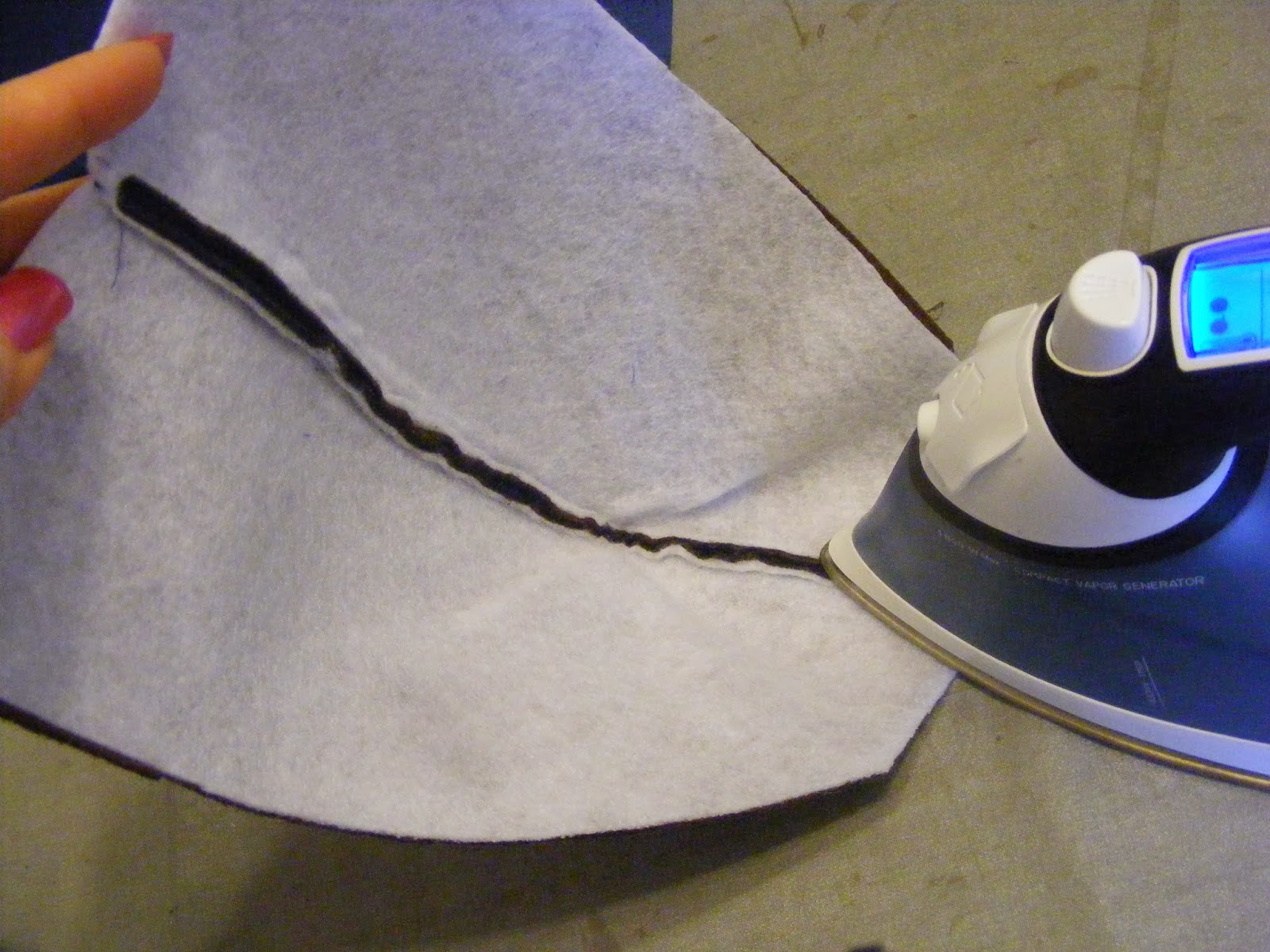Now let's sew the side seams of the lining. We won't sew all the way around the lining so there is an opening to turn the bag right side out at the end! Pin the lining, right sides together from the top edge to just past the darts. Make sure your zipper and zipper tail are not caught in this seam!
Line up the seams as closely as you can. On this side, mine was just a 1/4" off. That's ok, just sew at 1/2" from the larger side from the top of the lining facing to about an inch past the dart. We'll make adjustments in the bag if needed next. Repeat, sewing the other side of the lining as directed. The bottom between the darts is not stitched.
To make it easier to close up the lining at the end, press the open seam area back 1/2" on each side.
Find your outside bag. Turn it right side in. Turn the lining right side out. Place the lining inside the back and check the upper edge to see if they are about the same size.
If one is larger than the other, we now want to take in the larger piece at the side seams. This sample lined up just fine, but that doesn't always happen! If your pieces differ in size, take the larger piece and sew a new seam to make it smaller at the side seam. Take it in evenly on each side. Taper the side seam out gradually to maintain the curved shape. Depending on how much you take in, you can either cut away the old seam, or with a seam ripper, open it up.
(if you are making a single strap bag, refer to the pattern to attach the strap now)
Line up your bag outside and lining once again and pin around the top edge. Make sure to keep your handles free of the seam and that the loop straps are laying flat. Pin around the top edge to hold it all in place! Stitch all the way around the top edge. I find it easiest to stitch from the inside.
Turn the purse right side out and check the top seam to see that nothing is caught in the seam and that the handles are straight. Make any corrections if needed.
Give the upper edge a nice press. I like to roll the lining/facing just slightly to the inside of the bag. Now we will topstitch all the way around the upper edge of the bag to hold it all in place.
The last step is to close up the bottom of the lining. Pull the lining back out of the purse. Topstitch close to the edge of the opening to close it up. You could hand-sew this seam, but since it's inside the bottom of the bag, I topstitch since its fast and easy!
Tuck the lining back inside and your purse is done!
I hope you will pop over to my Facebook page and share a photo of your finished Tina Purse with all of your sew-a-long friends. I'm sure everyone wants to see what we have created this week!
I hope you had fun sewing along with me. Want to sew another Gaila Designs Pattern? Maybe you will win a free pattern! Enter below between now and Sunday night. Your email will only be used to verify your entry method was completed (I will not share it with any other party) and to notify you if you win. You may enter with one, two or three of the options listed below. Up to 3 entries per person.
(This is my first contest with Rafflecopter, so if you have trouble, please let me know!!!)
a Rafflecopter giveaway



















































